The Edgemont/Morning Glory commercial strip along the 900 block of East Main Street was actually subdivided into a commercial node at Elm Street and a commercial node at Morning Glory Ave., with 4 residential structures between the two.
1950s aerial, highly magnified, showing the 3 commercial buildings at the west end of the block, the 4 houses in the middle of the block, and the commercial structures at the east end of the block.
These residential structures - 915, 919, 923, and 927 East Main were probably built privately, rather than by either of the adjacent mills. Whether the larger structures were built as single family structures is not clear, but by the 1920s, they were clearly being used as rooming houses and apartments. Below, a sampling of residents from 1919-1960.
915:CC May | Mary Warren | Emma Godwin | Mary Warren | "Apartments" | "
919:GH Hux | AD Ezzell | Roxie Chappell | Roxie Chapell | Zora Evans | Andrew and Ella Ivey | "
923:Emily Hartsoe | GL Lipscomb | Maggie Scoggins | Magie Scoggins | Paul Dean | Sudie Tyndall | Sally Moore
927:None | GM O'Neal | Multiple | Katie Lee | Helen Self | "
The "Boarding House" or "Rooming House" is an interesting piece of 'shelter history' that, once common, seems to have mostly disappeared, other than the one-off room-to-rent in the back of someone's house. The differentiation, if it's unclear, from apartment houses is that the rooms would be private, but the common areas of the house would be shared in a boarding/rooming house. A boarding house may also have provided meals.
From having looked at many Durham city directories and photos, tracking the evolution and demise of the many large historic houses on the periphery of downtown, I can tell you that this seems to have been the most common evolution of the large Victorian single-family home in the period from 1910-1950, where the next generation of wealth had moved out to Duke Park, Forest Hills, and Hope Valley. I can speculate that this was simply an era of smaller town, higher trust, etc., that would have made people more comfortable with living in a house with long term renters (the owner often lived in the house and rented out the rooms.) These also appear to have been viewed as a scourge by many; one can imagine the temptation by an owner/landlord to squeeze as many people into such a house as possible, leading to overcrowding and poor living conditions. These were the genesis of various laws limiting the number of unrelated people that could live in a single home.
For many houses, this was an evolutionary step in their eventual economic obsolescence. Clearly with these houses, there was a demand for housing by mill workers and growth in the commercial character of the block that may have pushed these houses towards an apartment/rooming function earlier.
In later evolutions of this sort, we see the old large houses physically subdivided into multiple apartments. Even when done cheaply, as it almost always is, this is more expensive for the landlord (providing and maintaining separate plumbing, mechanical, electrical and fixtures for each apt.), and thus raises the rent need for each apartment versus a room. This was more typical of large house conversions in Old North Durham, Trinity Park, Trinity Heights, and Cleveland-Holloway.
By the 1960s, with the decline of the socioeconomic conditions in Edgemont, the houses had reached a point of economic decline that led to their demolition. In this 1960s photo, 923 is featured prominently. 927, which would have been to its right, has been demolished; a portion of 919, to its left, is visible.
(Courtesy Durham County Library)
919 and 923 were gone by 1993, and 915 soon after that point.
Bird's Eye view of 900 East Main St., undated, but likely early 1990s.
The city, having wrought particular destruction of its historic infrastructure in the 1960s and 70s, compounded its errors in the 1980s and 1990s by funding incompetent organizations to try to revitalize economically depressed areas. Thankfully, the city has largely moved away from this model, after these organizations failed repeatedly, squandering moderate to immense amounts of money. My opinion is that, when this was well-intended, it resulted from a desire to try to get 'two wins' out of one pot of money. Meaning, rather than hiring private sector experts to revitalize socioeconomically depressed areas - an immense challenge - the city hired inexperienced non-profits/private companies that were headed by politically well-connected owners/directors, in an effort to create economic development and jobs in the communities that lived in these neighborhoods.
With this inexperience, and an incredibly challenging problem, you can imagine the results, or lack thereof. Between 1995 and 2001, Hayti Development Corporation received $886,000 from the city to create economic development through construction of housing and retail businesses in Edgemont. They rented an office, put up some signs, touted development of grocery stores and various office/retail complexes along this strip, all of which amounted to - nothing. The money disappeared, and although HDC is still listed as the owner of some lots along this strip, the organization has been defunct for years.
915-923 East Main, 01.09.01
915-923 East Main, 01.09.01
915-923 East Main, 01.09.01
As a developer, I've certainly learned that development is very challenging - it costs a lot of other people's money (who expect to get it back,) and it is high risk for even the most experienced developers. I think it's, unfortunately, one of those things that a lot of people think they understand, because it is so tangible and seems so straightforward - just spend some money and build a building, right? - which leads to overconfidence, or a false sense of comfort on the part of both new developers and the public sector.
I think after these misadventures, the city loan scandal, Rolling Hills, etc. the sense that we can do job training for major development in economically-challenging neighborhoods by giving money to new developers that are underrepresented in the 'developer community' has been largely repudiated at this point - with the city approaching Rolling Hills and other economic development tasks in a far more prudent fashion than in the past.
But this itch still arises at times - because we would of course, like to see a more diverse population of developers, contractors, architects, CEOs, etc., and it's tempting to think we can kill two birds with one stone. Combined with an ongoing misperception that non-profits are somehow inherently more about the public good vs. private enrichment than the private sector is, we end up with a lot of public funds expended for very little end result. (When non-profits do what they are supposed to do and break out compensation for their directors/officers on their public record tax returns, the resulting information can be very helpful in dispelling the notion that non-profits are something more than just businesses.)
So this land remains vacant; the other HDC target, across the street (the former Colonial Stores/Goodwill parcel,) has been redeveloped by DHA. I hope that someday this land will see storefront retail and office/residential above, creating a truly architecturally double-sided urban street in Durham - a rarity.
915-927 East Main, 05.09.07
915-927 East Main, 11.13.10
Find this spot on a Google Map.
35.989404,-78.890609

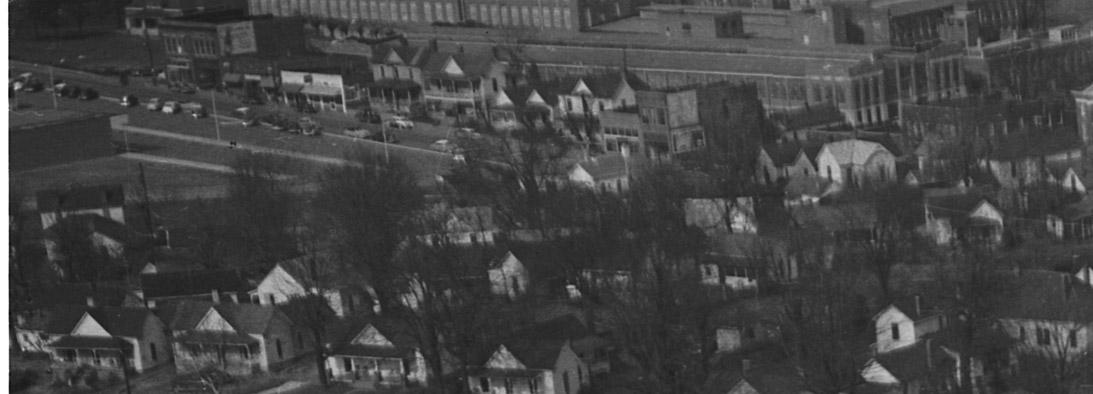
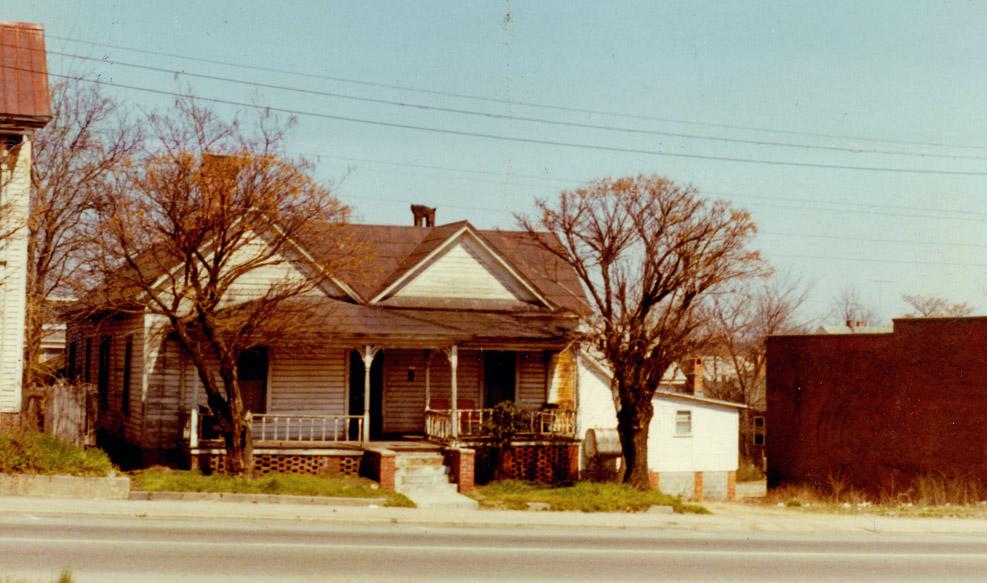
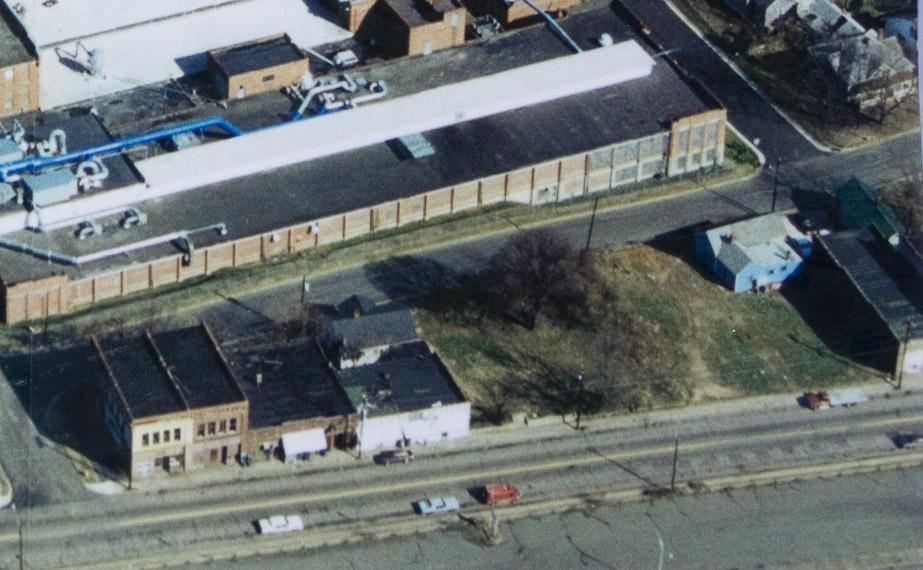
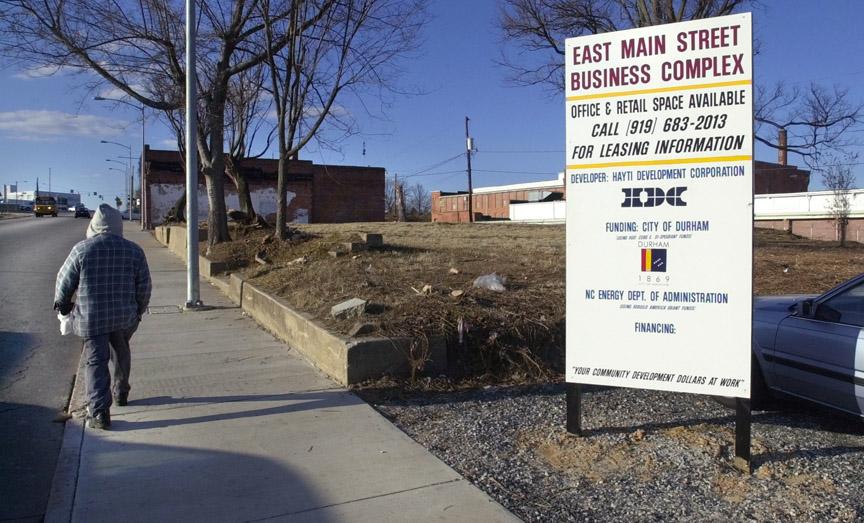
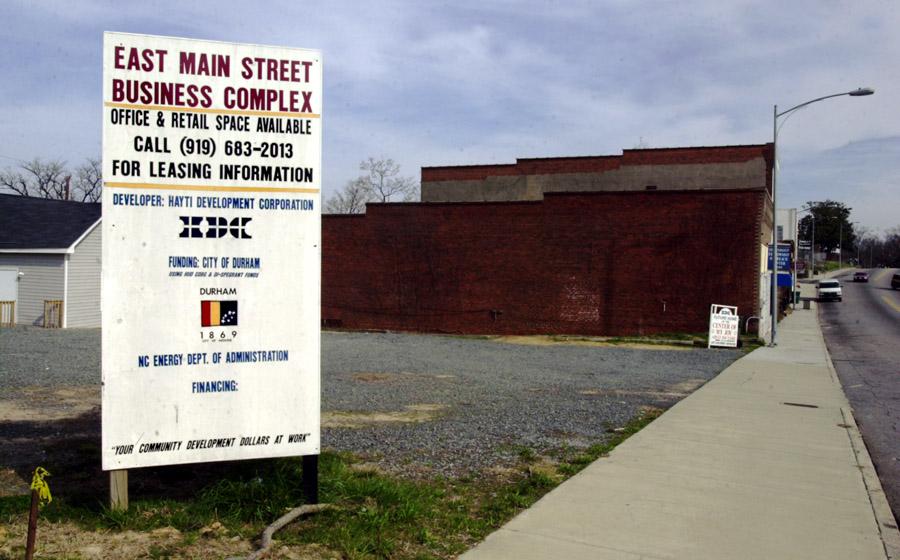
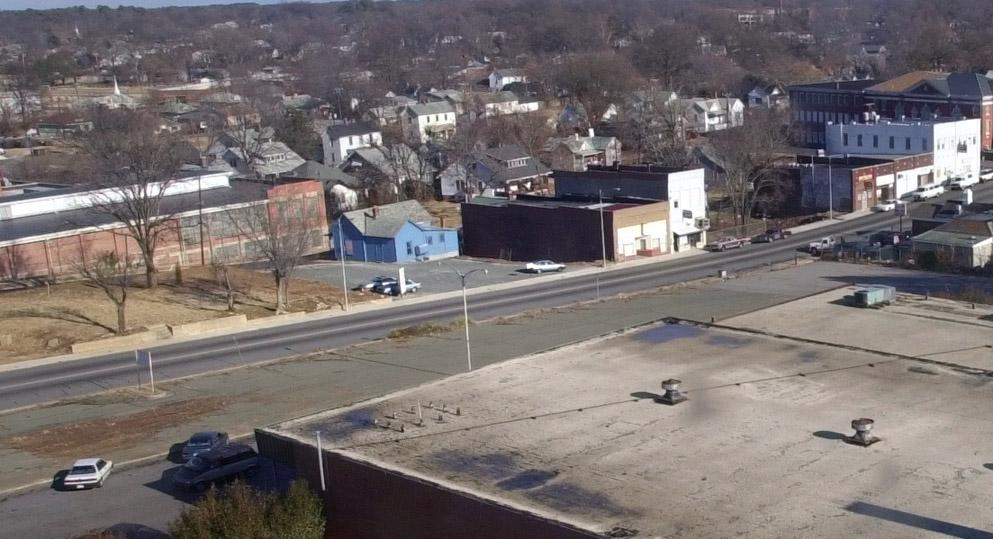
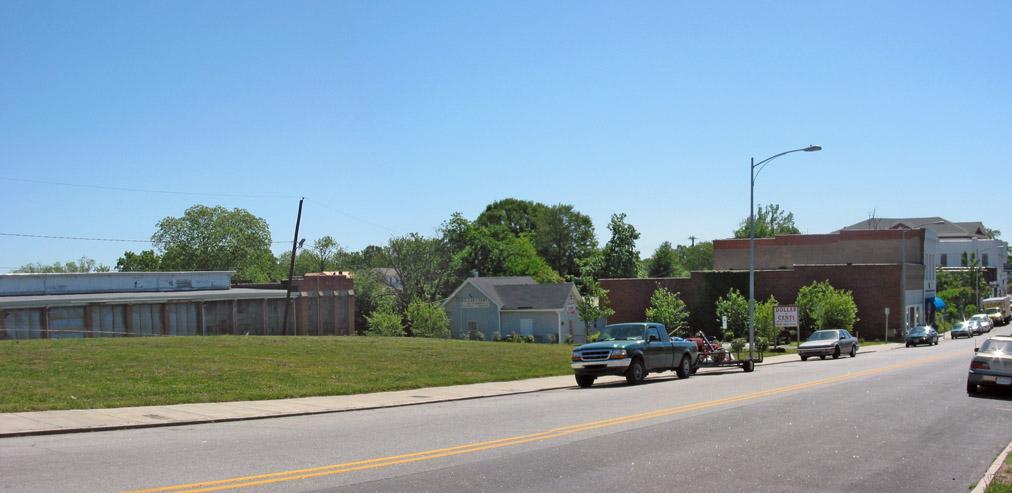
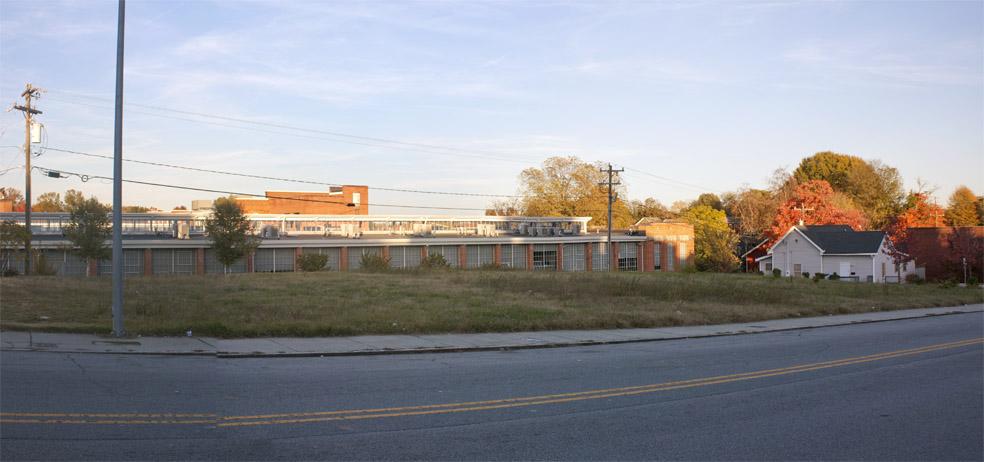
Add new comment
Log in or register to post comments.